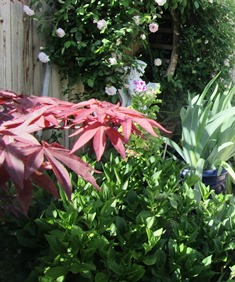Archive for February, 2014
Hummers Behaving Strangely
The tiny hummingbird with the dazzling red ruby throat announces its presence with a loud chirp that sounds something like a melodic drop of water.
It rises to heights in the air where it almost disappears to the naked eye and then dives to the ground, swoops in a U shape and rises again . . . over and over while a female watches from a nearby tree. Could this be a courtship ritual or a territorial display or both?
Actually it can be a little of both. The hummer’s spectacular displays of flight and air acrobatics often occur in areas rich in nectar sources. The incredible air acrobatics demonstrate the male hummer’s flying prowess to females. Their rapid wingbeats sound like a hum or whir. And they create another distinctive sound with their tail feathers.
While the females dine, the male hummer will chase away any intruding males until he can mate. He will mate with more than one female.
Once mated, the female will build the tiny nest using spider webbing as the glue to hold together a nest made of lichen, animal hair, and plant material. She has little to do with the male after mating; her focus is on the nest and eggs.
Here on the farmette of late, we’ve seen several hummers, but most often, the exquisite ruby-throated hummingbird (Archilochus colubris). The female will lay two eggs in a tiny nest that will be difficult to detect because of the lichen.
She will incubate the eggs for two-weeks or slightly longer, sitting on them for around 55 minutes of every hour until they hatch.The babies will remain in the nest for three weeks, when their body mass and maturity is sufficient for them to begin to forage on their own.
If you are curious about how a male hummer creates a distinctive sound using his tail feathers during courtship rituals, see the Science Daily article at http://www.sciencedaily.com/releases/2011/09/110908145053.htm.
To attract hummingbirds into your yard or garden, plant bright-blooming flowers. They select flowers for nectar that are bright and colorful such as salvia, columbine, honeysuckle, and bee balm.
Ensure a fresh supply of water in a fountain or birdbath. If you build or buy a birdhouse, aim for one with a small hole and secured at a height not easily accessible to raccoons and cats. Then when the fruit trees blossom and flowers begin to show, watch for hummers to begin behaving strangely.
Telltale Signs of Spring
As I write this, the honeybees are scouting every plant on the property. Awakened by warm weather and sunlight, they search for nectar. Aside from a few California poppies and other wildflowers blooming in front of the house, they won’t find much to forage on just yet.
Of course, there are a few apricot, nectarine, and almond tree blossoms as well as a smattering of white strawberry blooms in the raised beds at the back of our property. But within a few weeks, the warm weather of March and April will render the farmette virtually covered in masses of sweet offerings for the honeybees.
Still, there are the early signs of spring. The Japanese maples are leafing out in a dazzling show of red color. The pregnant stems of our bearded iris are swelling now for their Easter bloom cycle. And the Greek oregano is popping up everywhere as it does this time of year.
Birds are building nests, but I haven’t seen the red-breasted robins just yet. When they show up, searching for worms and grubs, I will know spring has truly arrived. Until then, I look for the telltale signs that Mother Nature is about to robe herself in the splendid garments of spring–fruit tree blossoms, leaves, blooming wildflowers, and lovely kitchen herbs pushing up all over the place.
 Facebook
Facebook Goodreads
Goodreads LinkedIn
LinkedIn Meera Lester
Meera Lester Twitter
Twitter







